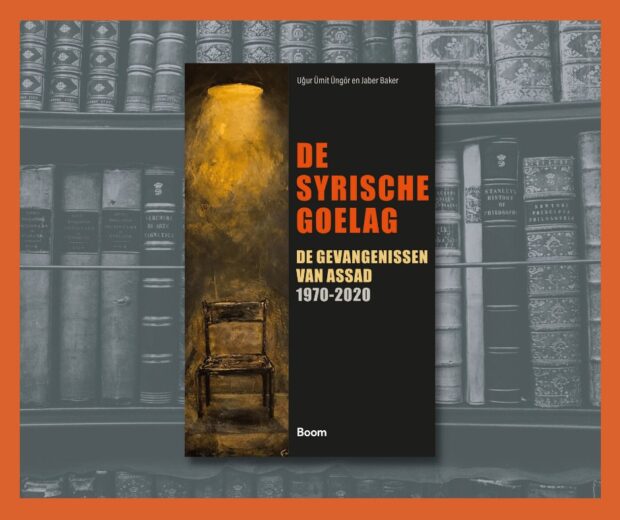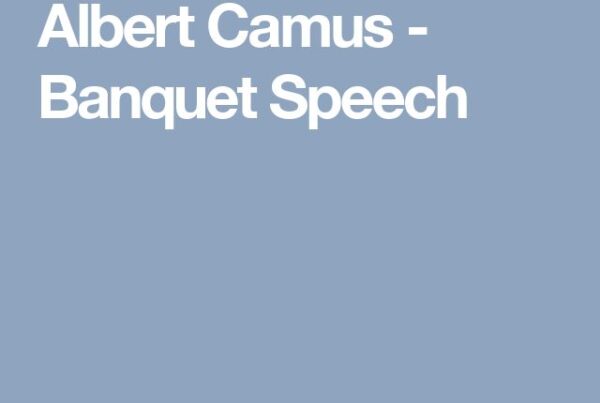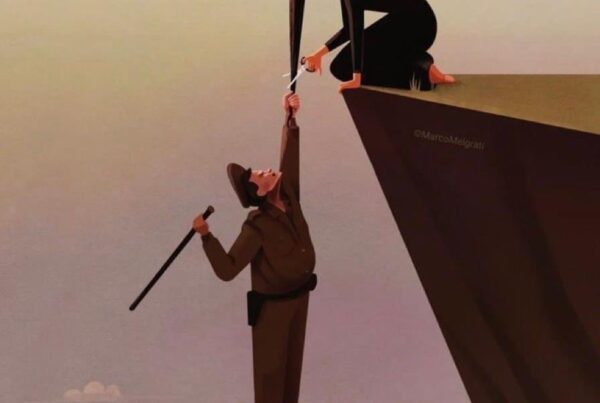By THE SYRIAN OBSERVER
Uğur Ümit Üngör, who uncovered the Tadamon Massacre with his colleague, told the Syrian Observer that he witnessed the discontent of the Syrian people back in 2006.
Last week, two researchers broke a bombshell when they uncovered a documented war crime, which the Assad regime in Syria had committed back in 2013. The Dutch scholar Uğur Ümit Üngör and the Syrian researcher Annsar Shahoud spent two years working on a video that they received showing members of the regime’s Shabiha killing dozens of Syrian civilians in the Damascus neighborhood of Tadamon. They were determined to uncover the identity of the perpetrators, and so they did.
Uğur Ümit Üngör is a professor of Holocaust and genocide studies at the University of Amsterdam and the NIOD Institute in Amsterdam. His main area of interest is the history and sociology of mass violence, with a particular focus on the modern and contemporary Middle East. He has published books and articles on various aspects and cases of mass violence, including “Paramilitarism: Mass Violence in the Shadow of the State” (Oxford University Press, 2020) and the forthcoming “Syrian Gulag: Assad’s Prison System, 1970-2020” (Boom Publishers, 2022).
According to Üngör, “what makes these images so unique is that the perpetrators themselves, and their actions, are captured in moving images,” he says to the Dutch newspaper NRC. “During eleven years of research into Syria, I have seen thousands of images of gruesome violence and various sides of the conflict. But never before have I seen such clear proof that the Assad regime is executing and burning defenseless citizens.”

The Syrian Observer’s Editor-in-Chief, Wael Sawah, spoke on WhatsApp with Professor Üngör. Below is their conversation:
The Syrian Observer: since I first met you in 2014, I saw your passion grow regarding the Syrian cause. You have worked for years on your book, Syrian Gulag: Assad’s Prisons, 1970-2020, on which you worked with Jaber Baker. Last week you blew up a bombshell by publishing an atrocious video that showed the Tadamon massacre that took place in Damascus back in 2013 but also uncovered the perpetrators who killed dozens of helpless civilians in cold blood. How did your story with Syria start?
Uğur Ümit Üngör: As you know I was born in Turkey and raised in Holland. I used to visit family in Turkey but had never been to any of Turkey’s neighbouring countries, as I know Holland’s neighbouring countries and speak their languages: German, French, and English. So in 2006, I decided to visit all the countries neighbouring Turkey: Georgia Armenia, Iran, northern Iraq, and Syria. In Syria, I made a huge tour, for about a month and a half. I spent a great time there, visiting towns and villages, and making friends. Although my experience was limited and I did not speak the language then, I was able to realize that there was tension and saw how the Syrians I met (including students from Aleppo University) had negative views of the regime.
When the revolution broke out in 2011, I was working on a project on the Armenian genocide. That’s why I visited Aleppo again, to meet Armenians there. But then I saw how the regime was violent in its repression. I am a scholar of violence, so I said to myself: “I really need to look at that.” So I started focusing on Syria. I learned the language and the literature, and once the refugees began to come in I started interviewing them. And these interviews were very helpful because they give you a very clear picture actually of how the conditions were to live in that country.
One of the things I noticed very much there, especially in 2015-16, was the disproportionate number of refugees who arrived in Europe and who went to prison simply because they demonstrated; or some for no reason at all – just completely random detention. So was when the idea of my book started.
Also when I saw those videos about the regime’s repression, I noticed those pro-regime militias who played a vicious role in curbing the protests. I was introduced then to the concept of Shabiha. So I started focusing on that and now I am finishing a book on that phenomenon.
So that is how it started and how it developed.
The Syrian Observer: You and Annsar Shahoud did an outstanding job. Horrible, unspeakable, and revoting were some of the words I have heard to describe the massacre you uncovered and documented in your exceptional report. In 2019, somebody leaked this video to you. On the one hand, had this person not disclosed this video, Amjad Youssef would have been another Syrian soldier who was defending his government; on the other, this is proof that one cannot hide evil forever, and truth will prevail ultimately. In your opinion, is it a mere coincidence or do you really believe that there will always come one day on which the truth will come?
Uğur Ümit Üngör: I do firmly believe that sooner or later, not only the truth will come out but also there will be opportunities for some forms of justice – whatever justice that may be. But the truth is the one thing that can never be repressed, nor can it be ignored. There is a famous Native American proverb that goes, “You can’t cover the sun with your hand.” And the same thing goes here, so what we know from the most repressive countries in the world, now and in history, proves this. Take the Nazis, the Soviets, and the Cambodian genocide: their crimes will eventually come out. Sooner or later, either the regimes themselves will leak them or survivors who flee the countries will uncover them. So, it is impossible to repress the truth indefinitely. That’s not possible. That was the case with Saddam Hussein’s regime or Yugoslavia and the ethnic cleansing that happened there. And the [Syrian] regime is no different. In fact, the regime is so brittle, and many mukhabarat defectors had run away with huge files that criminalize the regime. Therefore, the truth cannot hide forever. It is just a matter of time to study the final truth. What is important for that is to educate more Syrians on the research on violence. The only reason I was able to do this work is because of Annsar [Shahhoud, the co-researcher]. We needed both the academic skills to do this research and the skills to interview Syrians.
The Syrian Observer: But it is not only a coincidence. You had to work for two years to obtain detailed information about the culprits. How did you do that? How much hope did you have that you will find the criminals and uncover the truth? Were there some moments when you said: OK; we are done; it is going nowhere?
Uğur Ümit Üngör: There were definitely moments where we thought this is leading nowhere; it is a dead-end. We were looking for a needle in a haystack and it’s certainly not going to happen. And it took months and took a lot of patience. But I knew there has to be something out there. People who are this powerful, who are killing people in broad daylight, there is no way that there is no trace on the internet about them. So, we put a lot of patience; we worked hard on it and in the end, yes, it is not a coincidence we were able to locate these people. And this really happened on Facebook, because there is a whole world out there of pro-regime users. And just like the Blacklist*, the pro-regime Facebook is really useful for finding people. And that is exactly what we did. Then we started searching on YouTube for videos from Tadamon where he may be visible. And indeed, he was visible in one of the videos. You can see him really clearly and it is definitely Amjad, no one else So, yes, it needed hard work, a bit of intelligence, a bit of luck, and you get there.
The Syrian Observer: In August 2013, a military defector code-named Caesar shocked the world when he published 53,000 photographs which represented some 11,000 victims who were killed by the regime. Shocking as it was, the photos were still; perpetrators were not uncovered. What you did complements Caesar’s effort but goes beyond that. The video is more powerful than still images, and thanks to your work, we know now who the criminals are. How do you link your work to Caesar’s and other documentation?
Uğur Ümit Üngör: The similarity between this work and this leak and that of Caesar is that the regime is a closed box of unlimited violence, and the only way to get materials out of that closed box of violence is through these types of leaks. Those leaks demonstrate to us how serious this material is. The difference, however, between our work and Caesar’s is that we found the perpetrator and talked to him and obtained his confession on the crimes he committed, whereas Caesar’s great work did not go there.
The Syrian Observer: What do you think should be next? How can we use your findings to achieve justice?
Uğur Ümit Üngör: Justice is a difficult long process and it will be difficult actually to achieve anything as long as the regime remains in power. But one thing that definitely has to be done is salvage the truth so that the source base is already ready and the evidence base is ready to get to work once the perpetrators are out or if the regime ever falls (you never know, at one time Omar al-Basheer was though to remain forever in Sudan and look where he is now) so I suspect that if we do our best in documenting the truth and saving the truth that would be one major step.


